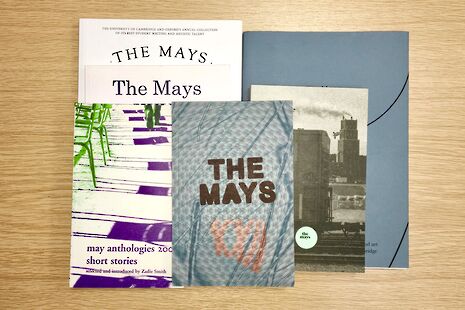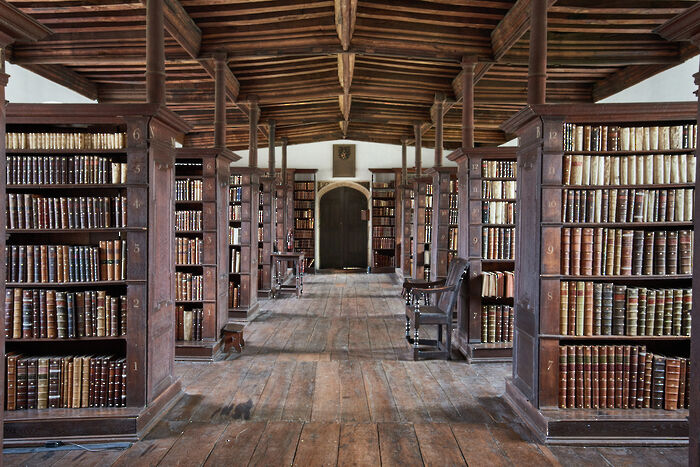The Mays: an interview with the editors
Every year The Mays publishes an annual selection of the best new artwork and writing by students at the universities of Cambridge and Oxford. Kyoka Hadano sits down with this year’s co-editors to discuss their vision for the twenty-seventh edition

Since its creation in 1992 by three friends at Cambridge, The Mays publication has always been edited and largely run by a team of students across the two universities. I sit down with Elizabeth Huang and Eimear Ni Chathail, co-editors of this year’s anthology, over a cup of tea one evening to discuss this year’s anthology and their opinions on art and the creative scene in Cambridge.
The Mays has a uniquely broader scope than most other student publications, transporting student writing and artwork from the desks of college rooms to a national audience. Its volumes are delivered across the UK and are found upon shelves of major bookstores and the desks of every major literary agent. “We even ended up in Finland last year!” says Eimear with a laugh. Guest editors, prominent authors, poets or artists such as Jeanette Winterson, Philip Pullman and Seamus Heaney, also take part in the selection process and contribute a preface to the anthology.
“You don’t need to do an arts degree to be creative”
Both editors embrace how this visibility encourages new student writing and art to be more open to the wider public. “It’s another way to get new student writing read”, says Eimear, who raises the example of Zadie Smith, whose career was launched by literary agencies taking notice of her short story in the 1997 collection. “Being published in an anthology could also inspire people to become more confident in themselves and encourage them to send out more submissions, be more creative”.
The anthology’s prestigious history and public profile has its benefits, but can equally intimidate, especially those who have never been published before. However, while The Mays takes itself seriously as a publication, it definitely does not seek to seem elitist, but rather “to give a platform for people’s talent to be shown”, regardless of prior experience.
Stressing that “you don’t need to do an arts degree to be creative”, they also bring to attention to how The Mays encourages a lot of people studying seemingly non-creative subjects, such as STEM, to tune into their artistic talents as a welcome relief from their work. Elizabeth, a third-year lawyer, found that while “there aren’t many opportunities for creative work within my degree, it has been really exciting to be involved in the creative scene here at Cambridge through publications such as The Mays”.
“There are loads of zines in Cambridge, a lot of exciting student written theatre going on and art exhibitions that have really exploded over the past few years”
Eimear and Elizabeth are aiming for “a more diverse Mays" this year – in relation to contributors' backgrounds as well as expanding the range of content they accept. This year’s The Mays will be published as a digital anthology as well as a paper copy in order to showcase a diversity of art in multimedia formats, such as video or sound art, transcending the limitations of the printed format.
Another potential new element of this year’s anthology comprises of reflections from people involved in creative projects around Cambridge in general. “There are loads of zines in Cambridge, a lot of exciting student written theatre going on and art exhibitions that have really exploded over the past few years”, explains Elizabeth. “There is a lot of stuff going on and it would be nice to record that”. They both identify an archival quality in The Mays as an annually released publication, which allows it to be “like a record of student writing and student art that took place within that year”.
A new approach will be taken concerning the arts element of the anthology. Submissions will be featured not as stand-alone pieces as has been done in previous years but as a selection of images of people’s work, accompanied by a blurb where the artist can write a little about their practice. The aim is to present “mini portfolios within the anthology”, to prevent the risk of art “just becoming decoration, which does not do justice to the artist”. These changes are facilitated by the new role of an arts editor within The Mays team.
Stemming from the arts theme, Elizabeth draws attention to the physical copy of The Mays as “an aesthetic object”, where creatives have also been involved in designing the cover and setting fonts. While the digital anthology offers new opportunities, there is still “something powerful about having a material object in your hand in which you know so much labour has been involved to create”. Printed copies of the Mays have also enabled direct connection with readers - Eimear talks of how “it was lovely to sell past copies in the English Faculty because it was a chance to meet and engage with so many people who are interested in The Mays and being creative”.
This dynamic between paper and digital, tradition and modernity, age-old prestige and new student writing, is one central to The Mays. Even in submissions, Eimear points out the beauty of a well-written sonnet and that “sometimes, being very traditional can be very interesting”. Good art does not necessarily have to be overtly radical or consciously edgy - “we love everything, that’s the message”, they summarise. “We encourage well done things, whatever they are”.
The Mays welcomes submissions by midnight on 20 February 2019.
 News / Caius mourns its tree-mendous loss23 December 2025
News / Caius mourns its tree-mendous loss23 December 2025 Comment / Yes, I’m brown – but I have more important things to say22 December 2025
Comment / Yes, I’m brown – but I have more important things to say22 December 2025 News / Clare Hall spent over £500k opposing busway 24 December 2025
News / Clare Hall spent over £500k opposing busway 24 December 2025 Interviews / Politics, your own way: Tilly Middlehurst on speaking out21 December 2025
Interviews / Politics, your own way: Tilly Middlehurst on speaking out21 December 2025 News / King appoints Peterhouse chaplain to Westminster Abbey22 December 2025
News / King appoints Peterhouse chaplain to Westminster Abbey22 December 2025









